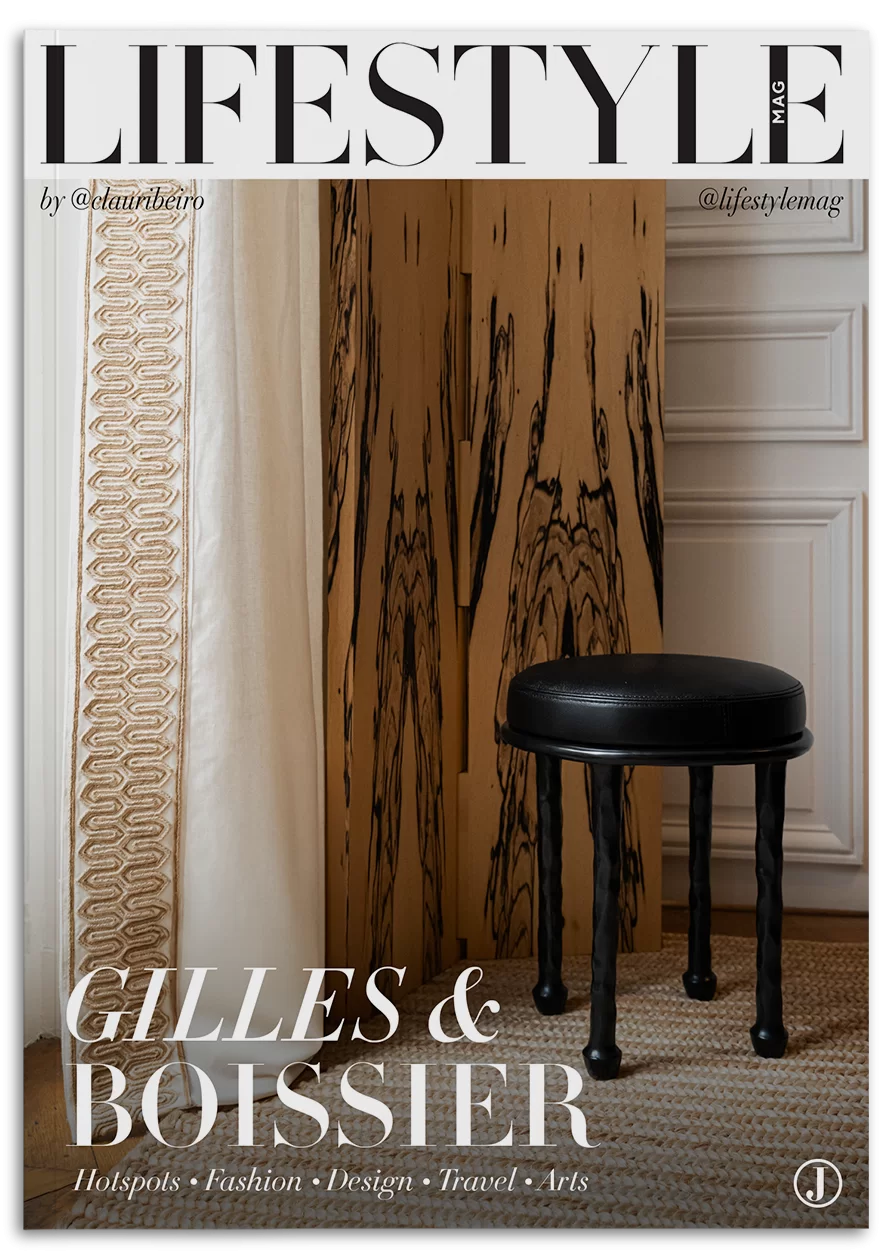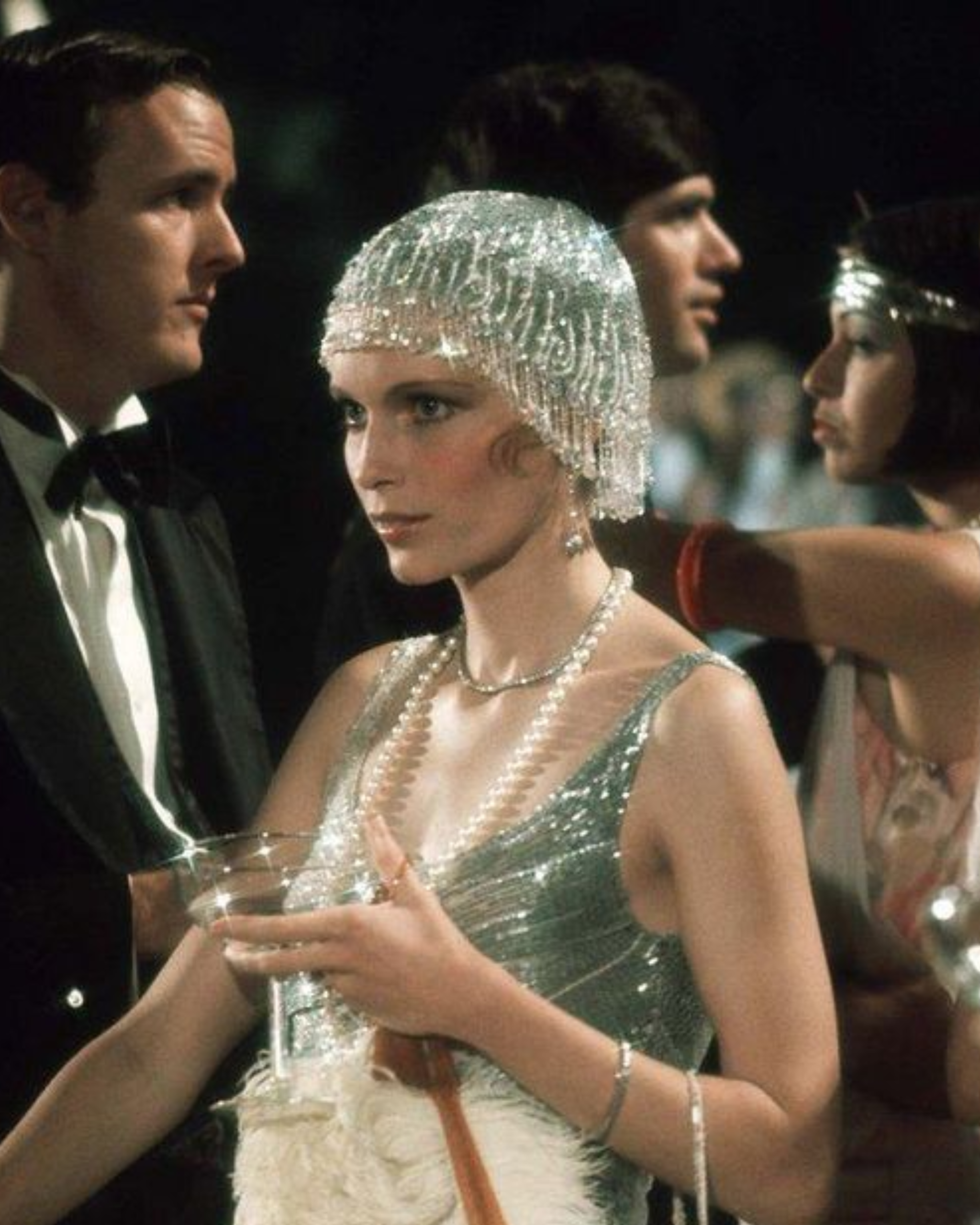
The Great Gatsby: where the film got it wrong with 1920s clothing?
The film "The Great Gatsby" (2013), directed by Baz Luhrmann, is a true visual feast, full of glitter, fringe, and dazzling dresses that evoke the Jazz Age.
However, the film’s costumes, designed by Catherine Martin, opt for an overly glamorous interpretation of 1920s fashion, setting aside some of the period’s historical nuances. Let’s explore the production’s successes and excesses, and how real 1920s fashion presented itself.
The glamorization of the Jazz Age: what did the cinema exaggerate?
The film brilliantly captures the festive spirit of the “Roaring Twenties“, but goes overboard with the intensity of its looks. While actual 1920s fashion featured more restrained sophistication, with straight silhouettes and fluid fabrics, “The Great Gatsby” opts for more structured, heavily ornamented visuals. The reality of the era’s fashion was less opulent than what’s shown on the big screen.
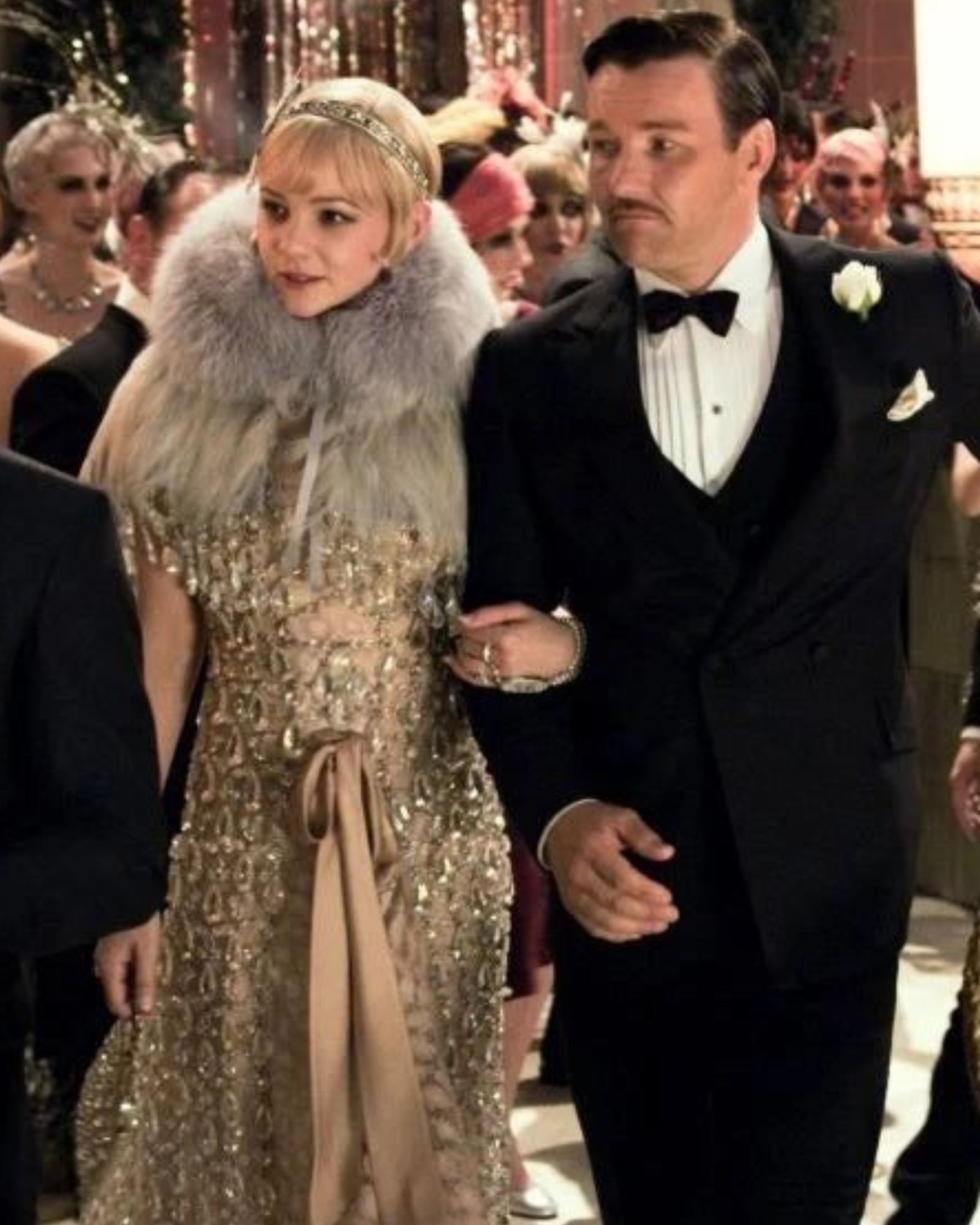
Flapper fashion: reality vs. exaggeration
The iconic style of the “flappers” is one of the film’s central costume elements. However, unlike the cinematic versions with excessive fringe and beading, real flapper dresses were more minimalist, with straight cuts, low waists, and lightweight fabrics such as crepe and chiffon. Fringes, when present, were used more subtly and strategically, rather than as the centerpiece of the look.
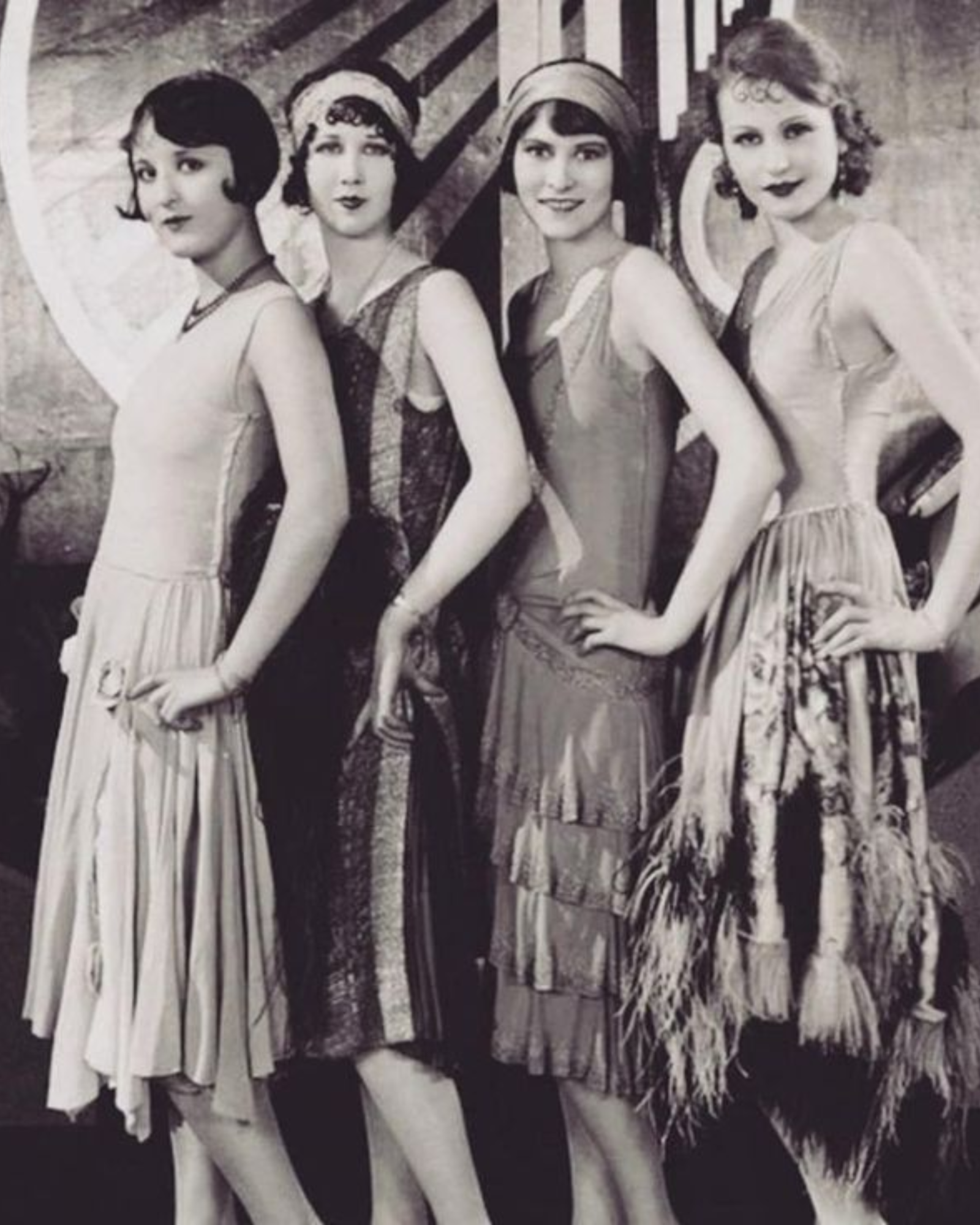
Accessories: plenty, but missing the essentials
The extravagant headbands and feathers in “The Great Gatsby” create a memorable image, but women of the time favored cloche hats and understated tiaras. Long pearl necklaces were indeed an iconic item, but the production’s excesses make the look more theatrical than historical.
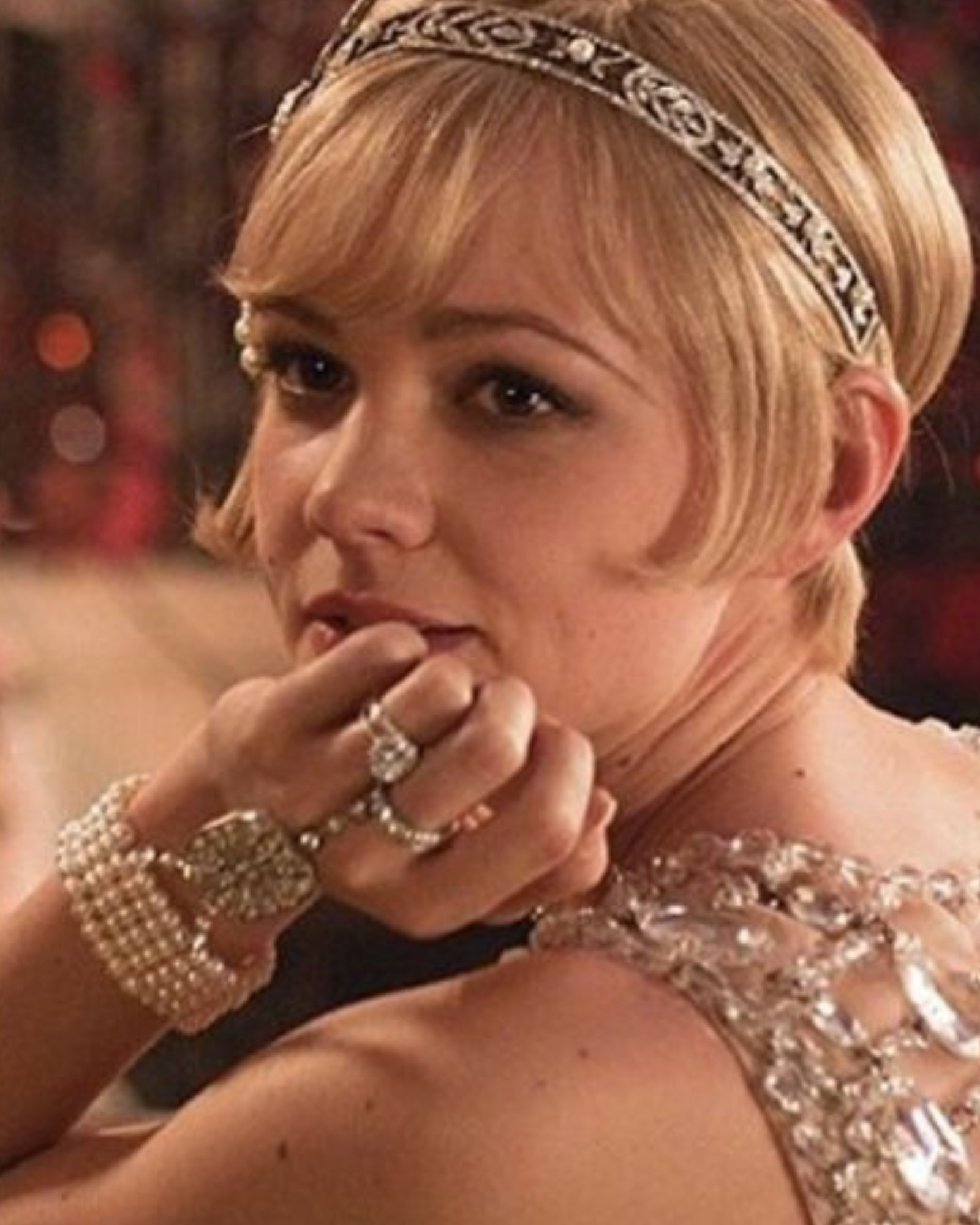
Men's fashion: the simple elegance of the 1920s
In the film, men’s outfits receive a Hollywood-style exaggeration. In real life, 1920s suits were well-tailored but typically in neutral tones and paired with simple ties. Gatsby’s wardrobe in the film, with heavier fabrics and dramatic cuts, differs from the sobriety and functionality that characterized men’s fashion of the period.
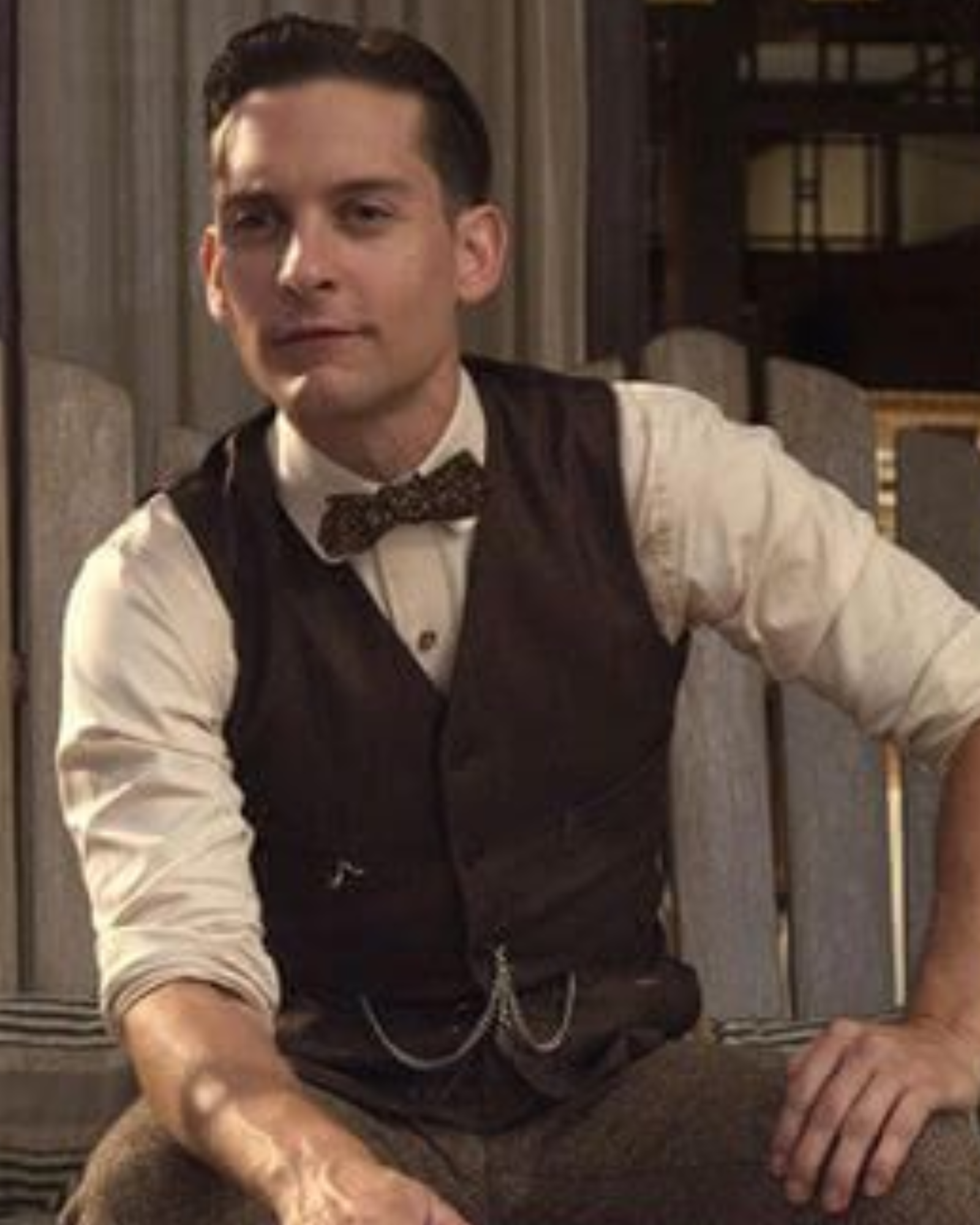
Jay Gatsby: the excess of wealth in wardrobe
Leonardo DiCaprio’s character sports velvet suits, sophisticated waistcoats, and costume choices that make him cinematically dazzling. However, men of the 1920s elite preferred a more discreet and refined look, without so many flashy details.
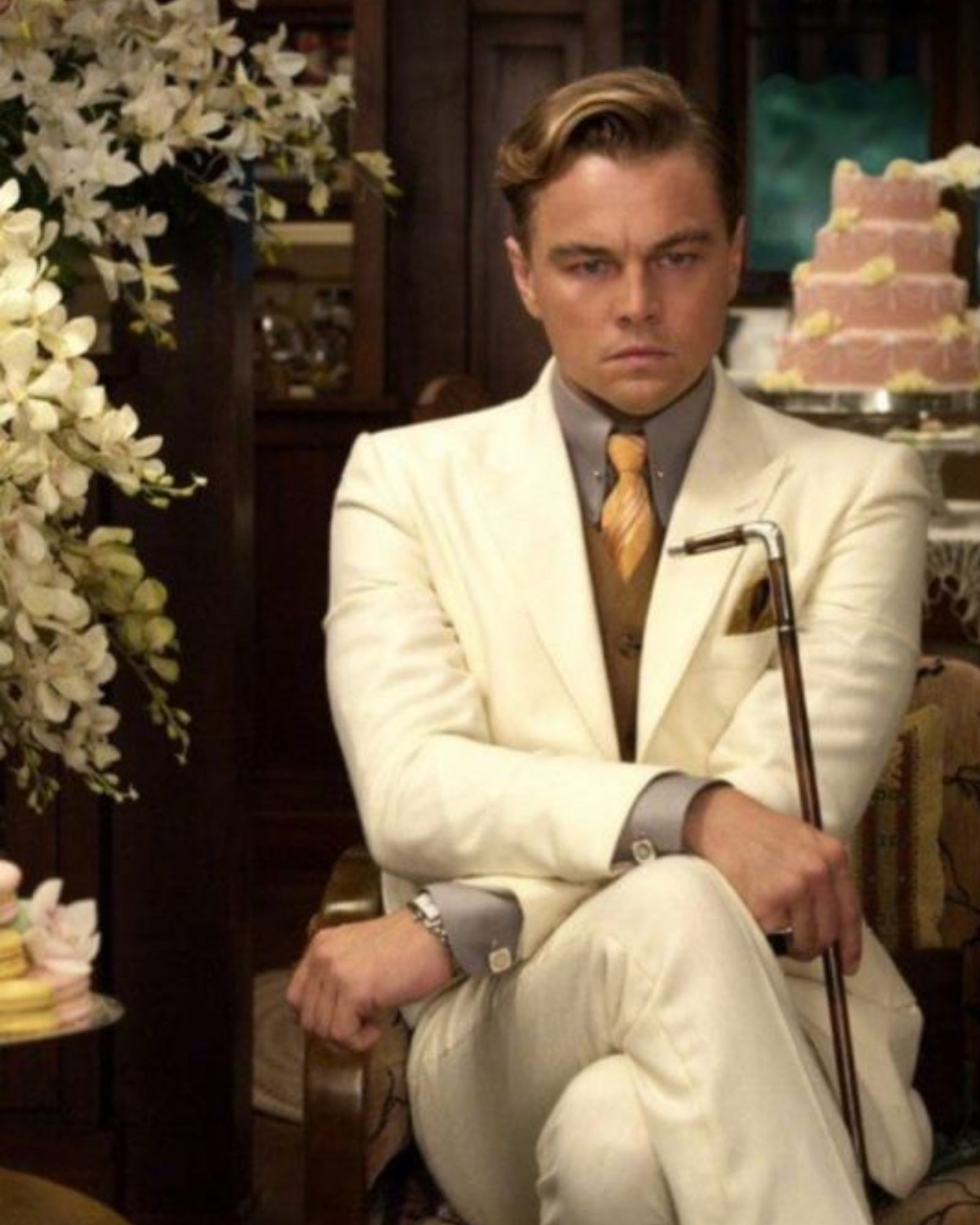
The true female silhouette of the era
While “The Great Gatsby” portrays luxurious dresses that accentuate femininity, the era’s fashion was revolutionary precisely because it moved away from corsets and emphasized a straighter, more fluid shape. The goal was to remove exaggerated curves and create a freer, more modern silhouette.
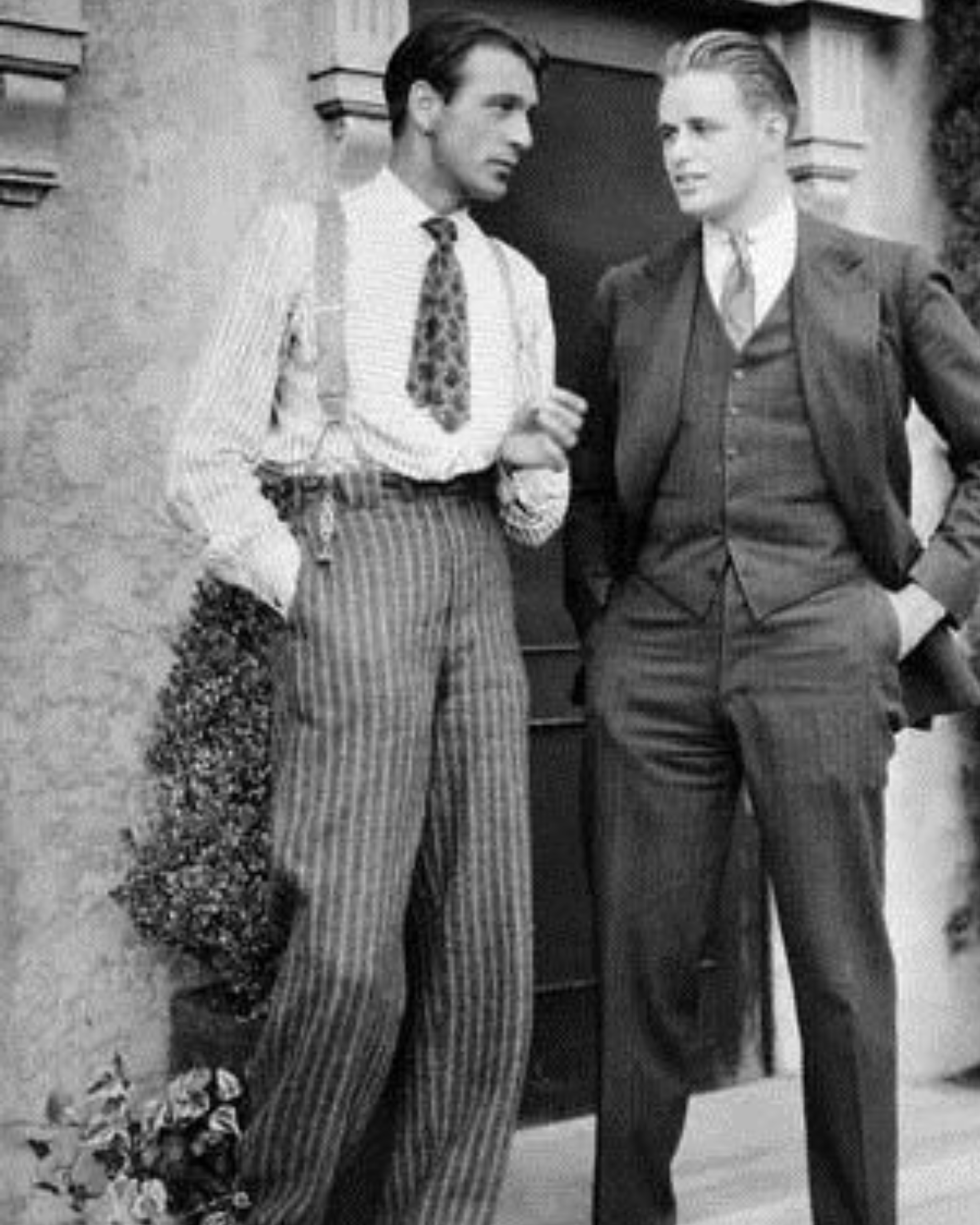
Fabrics and textures: real vs. cinematic
In reality, the most popular fabrics of the 1920s were lightweight and practical, such as crepe, satin, and chiffon. The film, however, relies on velvets and beading that, while glamorous, were not common in the everyday fashion of the era.
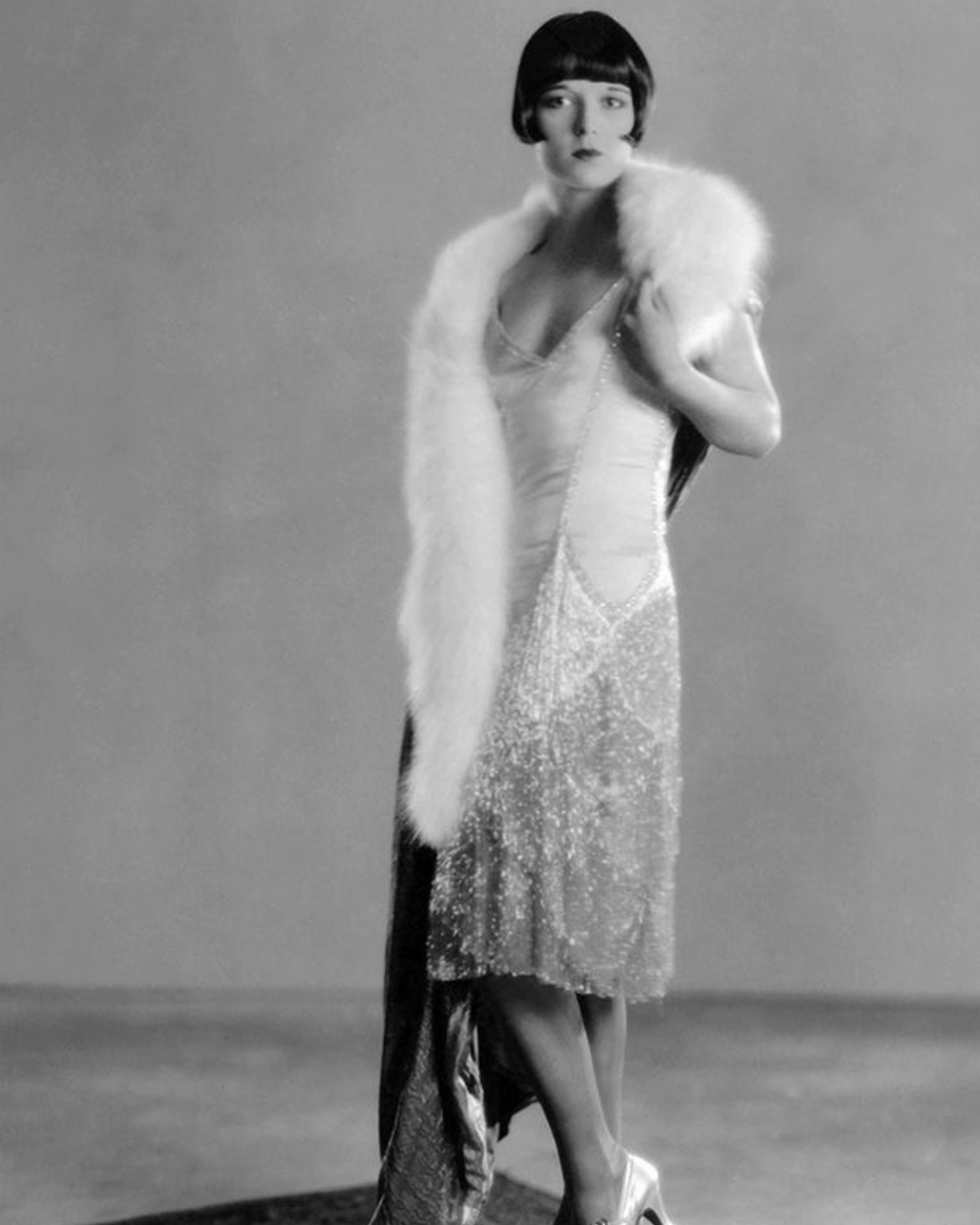
Daisy Buchanan's wardrobe: over-the-top glamour
Daisy Buchanan, portrayed by Carey Mulligan, is depicted as a high-society muse, always impeccable and covered in sparkle. However, women of her social class in the 1920s wore couture garments with more discreet luxury, without excessive ornamentation and details.
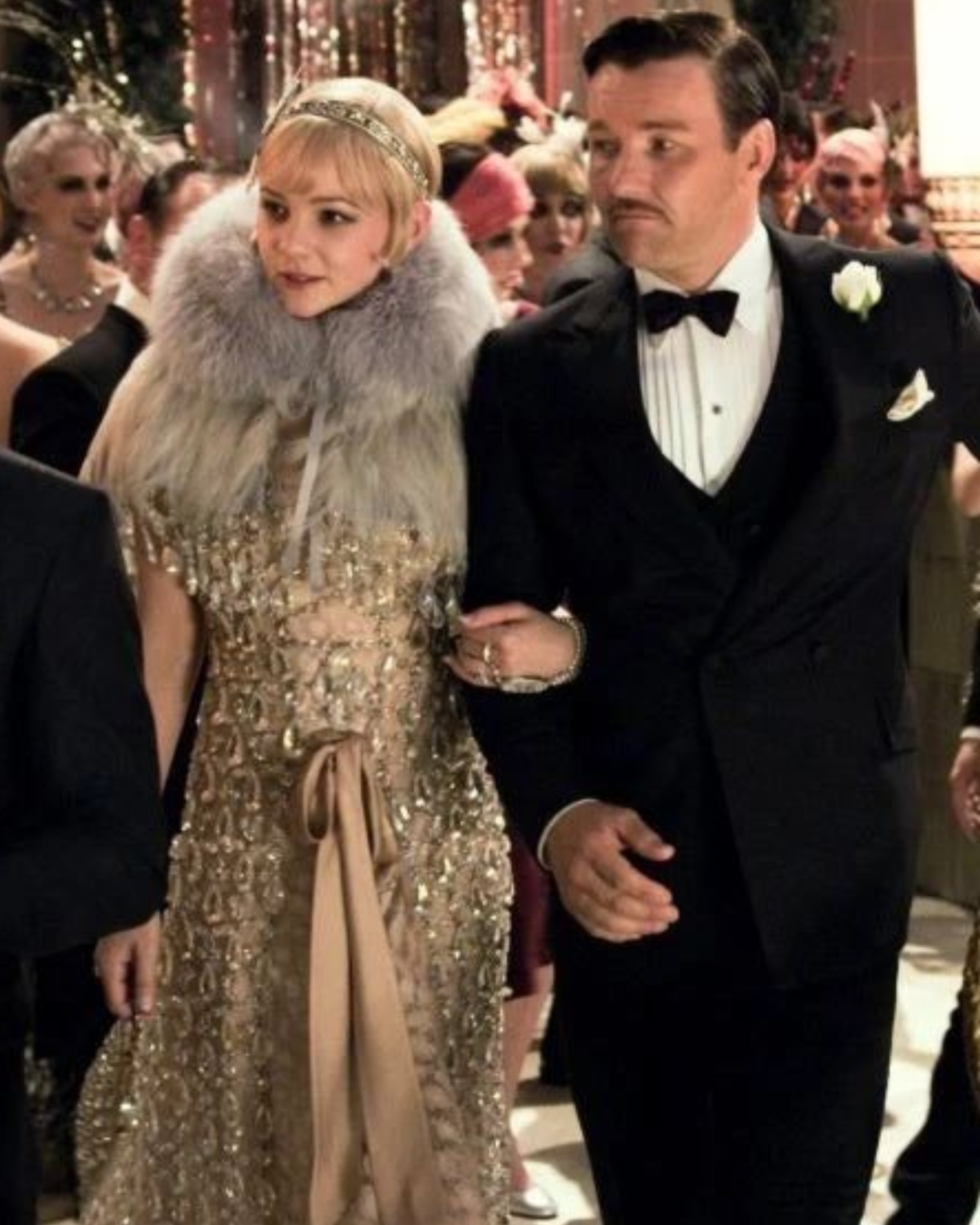
Conclusion: what "The Great Gatsby" got right and wrong in its costumes?
The costume design of “The Great Gatsby” is, without a doubt, dazzling and immersive, delivering an irresistible cinematic glamour. However, when compared to real 1920s fashion, it strays from authenticity by exaggerating ornamentation and details. Still, the production succeeds in capturing the essence of the era’s fashion revolution, which freed women from corsets and ushered in a new expression of style and independence.
If you love fashion and history, it’s worth watching the film with a critical eye and noticing how cinema often reinterprets reality to create a more dramatic and enchanting effect.

